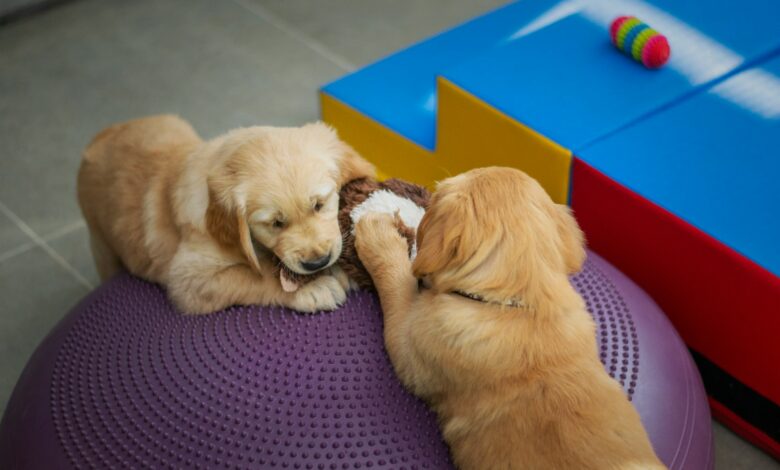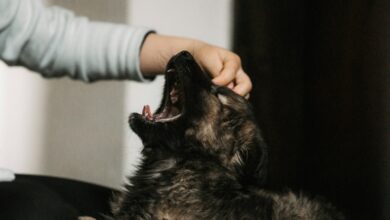Positive Reinforcement Training for Puppies: A Step-By-Step Guide

Carrying a puppy inside your home is fun but also comes with a ton of jobs; but I have not forgotten when I got my first pup, the house was filled with the one new-dog smell—wet fur and new grass on his paws. Also, a hint of puppy breath—the one part way—made everything feel living, but teaching male was not easy at first. Also, I stumbled and made mistakes, but one thing thatreally did the job was good reinforcement teaching. Also, her way of teaching pups—prizing good doing instead of punishing poor—changed everything for us; but when you want to know how to get started and what works best for your puppy, stick close. Also, I’ll walk you through things step-near-step, sharing tips and tricks thathelped me and many others.
What’s Good Reinforcement Teaching?
Good reinforcement teaching means helping your puppy to do good again near them by rewarding them with treats, praise, or playtime. Things are easy: when your pup does part of the thing right, you give them part of the thing they like. The one could be a tasty snack, a stomach rub, or a most-liked toy. Over time, your puppy starts to connect doing good with good things happening. Things are much nicer than yelling or punishment. And this thing builds trust between you and your furry friend. Also, plus, puppies learn faster and more happily here anyway.
Why Good Reinforcement Works Better Than Punishment
When I first started, I thought maybe yelling “No!” or scolding my puppy might teach him not to bite shoes or jump on guests; but truthfully, things just made him afraid and mixed up. Punishment can cause stress, worry, and flight in puppies. On the other hand, good reinforcement makes teaching fun and easy to get. Also, your puppy wants to learn why good things happen when they listen. Scientists back here too—dogs taught with prizes show better memory and stronger bonds with their owners.
Getting Ready to Start Teaching
Before you begin, gather part supplies. Also, you’ll want small, soft treats—the kind of thing your puppy really loves but won’t fill them up too fast. Think small bits of cheese or farm bird, but own a clicker when you want, but it’s not a must-have. Find a quiet space with few distractions, like a corner of your living room or backyard. Also, hold sessions short, around 5 to 10 minutes, so your puppy doesn’t need rest. This thing helps when you’re quiet too—dogs can pick up on your mood more than you realize.
Teaching Easy Orders Using Good Reinforcement
Start with easy orders like “sit,” “come,” or “stay.” Here’s how I did things with my pup:
- Grasp a treat close to his nose.
- Slowly move the treat above his head so the male naturally sits.
- The moment his lowest hits the floor, speak “Sit!” and give the treat.
- Praise the male with a happy voice, “Good boy!”
Do it again here a few times. Try without the treat, just the word and praise; but be waiting—part days, the male got distracted near a bird outside or a noise from the path. But the one is normal. Hold quiet and try again later.
The Part of When in Reinforcement
When is everything? When you take too long to give your puppy a treat, they won’t understand what they’re being prized for. I’ve caught myself near making a mistake giving treats. My dog ended up doing the fool, and things mixed up. Also, try to prize within 1-2 seconds after doing what you want. Here, a quick response loop helps your pup connect the dots faster.
Using Praise and Play as Prizes
Not every prize has to be food. Sometimes my puppy loves a good scratch behind the ears or a quick play of tug with his most liked rope toy. Also, I saw when I mixed treats with praise and play, teaching became more fun for Male. Plus, this thing helps when you’re trying to cut back on snacks or when your pup is on a special diet. Find out what your puppy loves most and use that one to hold while teaching new.
How to Grasp Mistakes Without Punishment
Let’s be honest—puppies will mess up. They’ll bite your slippers or have accidents on the floor. Instead of scolding, try to redirect their doing softly. For one, when your pup is biting fingers, end playtime and give a bite toy instead; speak “No bite” strongly but nicely, and next, praise when they change. Avoid yelling or hitting—the former just makes puppies afraid or shut down.
Creating an every time same Teaching Routine
Dogs thrive on routine. I found thatteaching at the same times each day helped my puppy understand. Thing’s when to focus. Morning, midday, and early evening sessions did the job best for us. Also, hold your orders and prizes every time the same; but when one day you say “Sit” and not “Sit down,” your pup gets mixed up. Also, choose your words and stick with them.
Socializing Your Puppy with Good Reinforcement
Teaching isn’t just about orders. Things are also around to help your puppy meet new people, dogs, and places without fear. Also, when my pup met new friends, I gave him treats and praise to show thatmeeting others is a good thing. Here, good things that happened help make trust. When your puppy seems worried, take things slow, and prize quiet doing.
Usual Challenges and How to Overcome Them
Sometimes, your puppy could ignore orders or get distracted, but here it is normal. Try those tips:
- Move to a quieter place.
- Use higher-value treats.
- Hold sessions shorter.
- End on a good note.
Not forgetting, staying is key. Your puppy is learning a whole new language, and trust me, things take time.
How to Slowly Reduce Treats
Once your puppy learns orders well, you can slowly reduce treats. Instead of a treat every when, give them every other when, next randomly. Hold praise and play as constant prizes. Here’s how your puppy stays healthy without relying just on snacks.
Tracking Progress with an Easy Teaching Chart
Holding path of what your puppy learns can really help. I made a little chart to see; But orders male knows well and which need more work. Here’s an easy one you could try:
| Command | Found out | Needs Do a lot of of times | Notes |
|---|---|---|---|
| Stay | Part | Yes | Gets distracted |
| Come | Yes | No | Answers well outside |
| Leave thing | No | Yes | Doing job on impulse |
Checking progress here way keeps things easy to get and helps you celebrate small wins.
A lot of times, questions are asked around good reinforcement teaching.
Q: Can I use good reinforcement when my puppy is stubborn?
A: all! Staying, and every time the same prizes will help even the most stubborn pups learn.
Q: What if my puppy doesn’t like treats?
A: Try toys, praise, or play, but every dog does not have the same favorites.
Q: How many times should I teach?
A: Short, a lot of of times sessions—around 5 to 10 minutes, 2-3 times a day work best.
Wrapping Up
Good reinforcement teaching is one of the nicest and most effectiveways to teach your puppy. This builds trust, strengthens your bond, and helps your pup learn faster, but don’t forget, every puppy is not the same. So get yours when you enjoy the little moments,and celebrate progress, no matter how small. I want what happened to help you create a happy, well-taught puppy. Loves learning just as much as playing.


